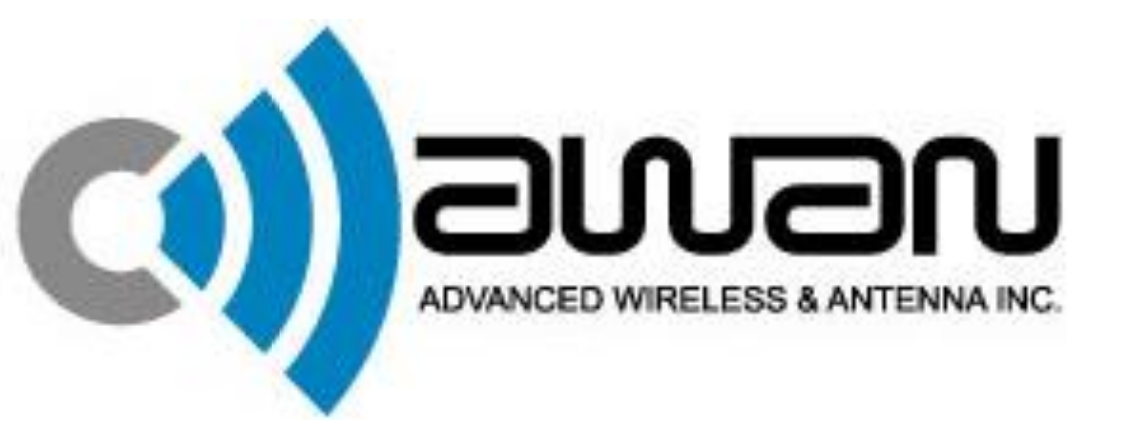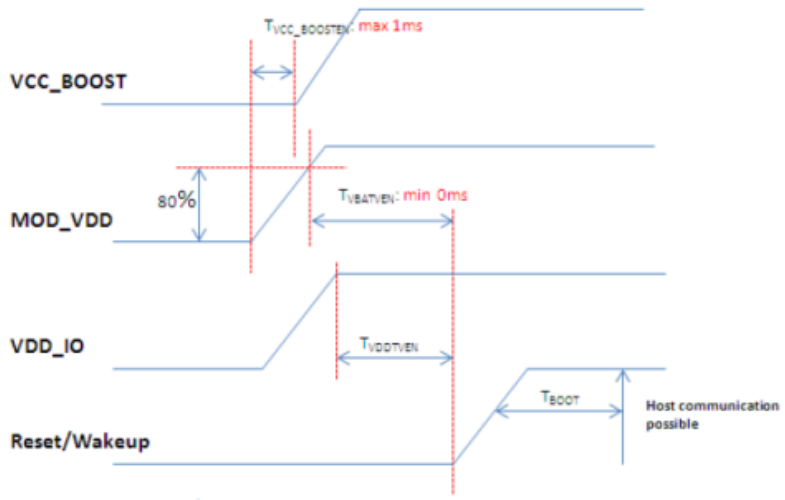Asus AWM-001 NFC Module User Manual
ASUS AWM-001 NFC Module

Module Specifications
NFC PROTOCOLS SUPPORT
| Main Chip | NXP NPC300 |
| Frequency | 13.56MHz |
| NFC Standards | ✓ ISO/IEC 14443A, ISO/IEC 14443B PCD designed according to NFC Forum digital Protocol T4T platform and ISO-DEP ✓ FeliCa PCD mode ✓ MIFARE PCD encryption mechanism (MIFARE 1K and 4K) ✓ NFC Forum tag (MIFARE Ultralight, Jewel, Open FeliCa tag, DESFire) ✓ NFCIP-1, NFCIP-2 protocol ✓ ISO/IEC14443A, ISO/IEC14443B PICC mode designed according to EMVco PICC ✓ FeliCa PICC mode |
| Host interface | ✓ NCI protocol interface according to NFC Forum NCI 1.0 standardization ✓ I2C High-speed mode supported |
| Host connector | 8 pin FPC/FFC |
| Antenna connector | 7 pin FPC/FFC |
| Operation temperature | 0℃~85℃ |
| Assembly type | SMT and FPC cable |
POWER
| Symbol | Parameter | Min. | Typ. | MAX. | Unit |
| MOD_VDD | Power supply | 2.7 | 3.3 | 5.5 |
V |
| VDD_IO | I/O Power supply | 3 | 3.3 | 3.6 | |
| 1.65 | 1.8 | 1.95 |
| Symbol | MAX | Unit |
| IMOD_VDD | 170 | mA |
| IVDD_IO | 15 |
HARDWARE INTERFACE
HOST Pin define
| Pin number | Name | Configuration | Description |
| 1 | VBAT | Power Supply Input | Module power supply |
| 2 | IRQ | Output | Interrupt request from module to platform |
| 3 | I2C_SDA | Input/ Output | I2C data |
| 4 | I2C_SCL | Input | I2C clock |
| 5 | Reset/ WakeUp | Input | Reset pin input from the host to wake up the device from standby and also to reset the device |
| 6 | DWL_REQ | Input | Control pin to set the NFC module in firmware download mode |
| 7 | VDD_IO | Power supply input | Host IO reference voltage |
| 8 | GND | Power Supply Ground | Module ground |
Antenna Pin define
| Pin number | Name | Configuration | Description |
| 1 | ANT1 | Output | Connection for antenna load modulation #1 |
| 2 | RXP | Input | Antenna reception path #1 |
| 3 | TX1 | Output | Antenna transmission line #1 |
| 4 | GND | Ground | Antenna ground |
| 5 | TX2 | Output | Antenna transmission line #2 |
| 6 | RXN | Input | Antenna reception path #2 |
| 7 | ANT2 | Output | Connection for antenna load modulation #2 |
Power Sequence Diagram
Power Up

Reset/Wakeup
Symbol |
Parameter | Min | Typical | Maximtuu | Unit |
| TRESETVEN | VEN pulse Width to rest | 3 | – | – | us |
Tsoor |
Boot time | – | – | 2.5 | ms |
Download Mode
To enter this mode, the pin DWL_REQ shall be pulled to PVDD before reset via VEN pin is before reset via VEN pin is before reset via VEN pin is done.
Power Consumption:
Power Consumption
| Mode | Average Current, mA (3.3V power rails) | Peak Current, mA | Average Power (mW) | Peak Power (mW) |
| Reader/Writer Actively Communicating | 3.3V:8 | 3.3V:82 | 27.3 | 270.6 |
| Field Detection / Polling* | 3.3V:10 | 3.3V:82 | 33 | 270.6 |
| Standby | 3.3V:0.73 | 3.3V:0.53 | 2.4 | 1.749 |
*Assuming a 1 Hz polling rate
Recommended Operation Temperature:
| Supply voltage | □ AC mains | ■ DC | |
| Type of DC Source | □ Internal DC supply | ■ External DC adapter | □ Battery |
| Operational Climatic | ■ Tnom (20°C) | ■ Tmax (85°C) | ■ Tmin (-30°C) |
Mechanical Specifications:
FPC/FFC
8 Pin connector for host
7 Pin connector for antenna
Antenna Matching Circuit:
FCC ID: MSQ-NFCAWM001
IC ID: 3568A-NFCAWM001
FEDERAL COMMUNICATIONS COMMISSION INTERFERENCE STATEMENT
This equipment has been tested and found to comply with the limits for a Class B digital device, pursuant to part 15 of the FCC Rules. These limits are designed to provide reasonable protection against harmful interference in a residential installation. This equipment generates, uses and can radiate radio frequency energy and, if not installed and used in accordance with the instructions, may cause harmful interference to radio communications. However, there is no guarantee that interference will not occur in a particular installation. If this equipment does cause harmful interference to radio or television reception, which can be determined by turning the equipment off and on, the user is encouraged to try to correctthe interference by one or more of the following measures:
- Reorient or relocate the receiving antenna.
- Increase the separation between the equipment and receiver.
- Connect the equipment into an outlet on a circuit different from that to which the receiver is connected.
- Consult the dealer or an experienced radio/ TV technician for help.
CAUTION:
Any changes or modifications not expressly approved by the grantee of this device could void the user’s authority to operate the equipment.
This device complies with Part 15 of the FCC Rules. Operation is subject to the following two conditions: (1) this device may not cause harmful interference, and (2) this device must accept any interference received, including interference that may cause undesired operation.
End Product Labeling
This transmitter module is authorized only for use in device where the antenna may be installed such that 20cm may be maintained between the antenna and users. The final end product must be labeled in a visible
area with the following: “Contains FCC ID: XYZMODEL ” and “Contains IC: XXXXX-YYYYYYY“
Information for the OEMs and Integrators
The following statement must be included with all versions of this document supplied to an OEM or integrator, but should not be distributed to the end user.
- This device is intended for OEM integrators only.
- Please see the full Grant of Equipment document for other restrictions.
Canada, Industry Canada (IC) Notices
This device complies with Canada licence-exempt RSS standard(s).
Operation is subject to the following two conditions: (1) this device may not cause interference, and (2) this device must accept any interference, including interference that may cause undesired operation of the device.
Canada, avis d’Industry Canada (IC)
Cet appareil est conforme avec Industrie Canada exemptes de licence RSS standard(s).
Son fonctionnement est soumis aux deux conditions suivantes : (1) cet appareil ne doit pas causer d’interférence et (2) cet appareil doit accepter toute interférence, notamment les interférences qui peuvent affecter son fonctionnement.
AWAN® Innovation Series AWM-001 Information Guide
NFC stands for “Near Field Communication” and, as the name implies, it enables short-range communication between compatible devices. This requires at least one transmitting device, and another to receive the signal. A range of devices can use the NFC standard and will be considered either passive or active. Passive NFC devices include tags, and other small transmitters, that can send information to other NFC devices without the need for a power source of their own. However, they don’t process any information sent from other sources, and can’t connect to other passive components. These often take the form of interactive signs on walls or advertisements. This NFC Module enables the device to be with NFC function. With AWM-001 and AWAN’s NFC Antenna, the user could enjoy more fun, experience and explore more application with NFC.
Information in this document is subject to change without notice.
AWAN Inc. assumes no responsibility for errors or omissions in this document. Nor does AWAN make any commitment to update the information contained herein.
IMPORTANT NOTICE FOR ALL USERS OR DISRIBUTORS:
AWM-001 are engineered, manufactured, tested, and quality checked to ensure that they meet all necessary local and governmental regulatory agency requirements for the regions that they are designed and/or marked to ship into. Because AWM-001 is generally unlicensed device that share spectrum with radars, satellites, and other licensed and unlicensed devices, it is sometimes necessary to dynamically detect, avoid, and limit usage to avoid interference with this device. In many instances AWAN is required to provide test data to prove regional and local compliance to regional and governmental regulations before certification or approval to use the product is granted. AWM-001’s firmware and software driver are designed to carefully control parameters that affect radio operation and ensure electromagnetic compliance (EMC). These parameters include without limitation, RF power, spectrum usage channel scanning, and human exposure.
For these reasons AWAN cannot permit any manipulation by third parties of the software provided in binary format with the AWM-001 (e.g., firmware). Furthermore, if you use any patches, utilities, or code with the AWM-001 that have been manipulated by an unauthorized party [i.e., patches, utilities, or code (including open source code modifications) which have not been validated by AWAN], (i) you will be solely responsible for ensuring the regulatory compliance of the products, (ii) AWAN will bear no liability, under any theory of liability for any issues associated with the modified products, including without limitation, claims under the warranty and/or issues arising from regulatory non-compliance, and (iii) AWAN will not provide or be required to assist in providing support to any third parties for such modified products.
AWAN and AWAN logo are trademarks of AWAN Inc. in the U.S. and/or other countries.
*Other names and brands may be claimed as the property of others.
REGULATORY INFORMATION
REGULATORY INFORMATION
This device complies with FCC 15.225 and it is applied to NFC antenna. To ensure RF exposure compliance, the module must be installed in notebook or tablet PC host platforms to provide a minimum separation distance from all people.
RF exposure considerations
The module must be installed in the host equipment such that at least 20cm is maintained between the antenna and users’ body
Information To Be Supplied to the End User by the OEM or Integrator
The following regulatory and safety notices must be published in documentation supplied to the end user of the product. in compliance with local regulations
Host system must be labeled with ” contains FCC ID: MSQ NFCAWMOOl “,FCC ID displayed on label.
If the grantee markets their product as being Part 15 Subpart B compliant (when it also contains unintentional-radiator digital circuity), then the grantee shall provide a notice stating that the final host product still requires Part 15 Subpart B compliance testing with the modular transmitter installed.